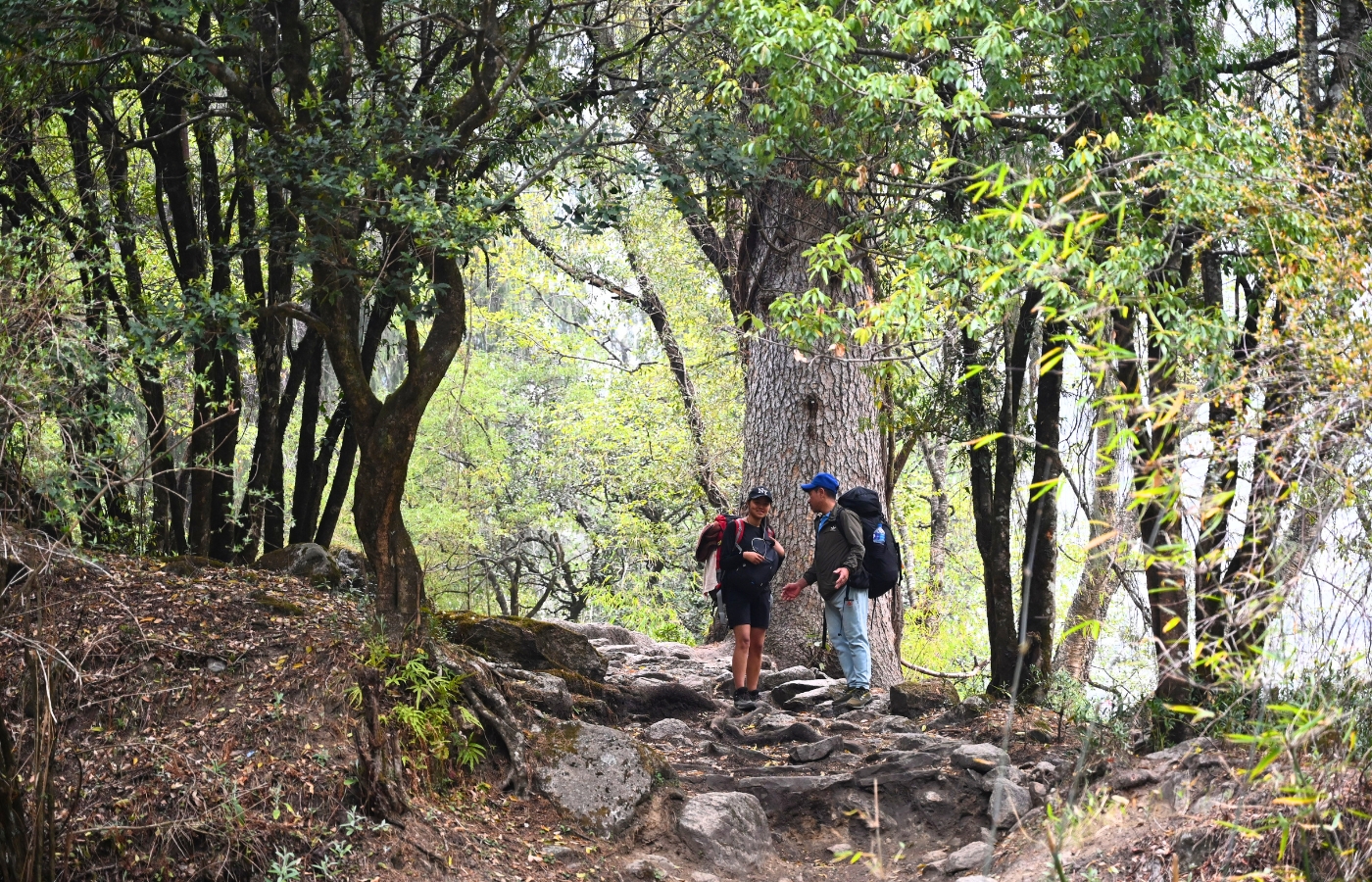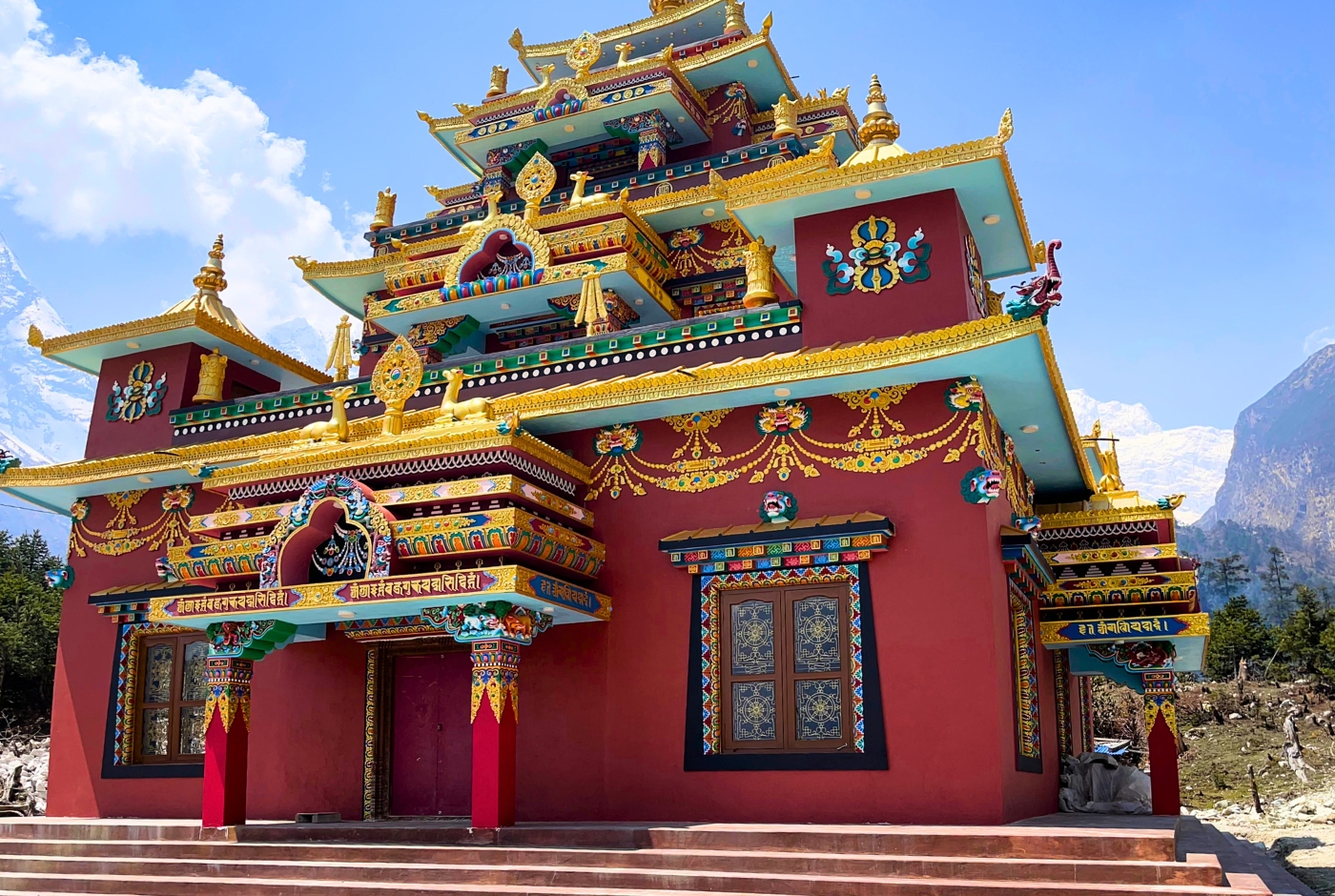- Kalcchuman Lake (Kal Tal): Hidden Death Lake
- Lho: Popular Ribung Gompa of Manaslu
- Shyala: One of the Best Panoramic Views
- Samagaun: Acclimatization stop of Manaslu Circuit
- Pungyen Gompa: Old Manaslu Base Camp
- Birendra Tal: Lake named after the King Birendra
- Manaslu Base Camp trek: Base of the 8th Highest Mountain
- Samdo: Closest to the Tibetan Border
- Dharamsala: Night before the Big Day
- Larkya La Pass: Thrill of the Manaslu Circuit Trek
Trekking off-beaten and pristine trails of Manaslu has become a new sensation amongst fellow trekkers and explorers around the world. While the Manaslu Circuit Trek boasts its popularity through the high mountain Pass, Larkya La, there are more places hidden within the region.
Staying aware about the significance of the places helps to understand the culture and enhances the experience. Trekking becomes more than an adventure activity when you realize the true worth of each attraction.
Here are some interesting facts and information on the destination you stay at and the destination you might want to explore.
Kalcchuman Lake (Kal Tal): Hidden Death Lake
Kal Tal, which translates as Death Lake in Nepali, is a beautiful side destination from the Prok village (between Deng and Namrung village on the 5th or 6th day of the Manaslu Circuit trek). It takes around five hours to reach the lake, depending on the walking pace. The trails are narrow and steep uphill with a mix of stone staircases.
While ascending, beautiful Rhododendron trees along the route and views of Ganesh Himal and Shringi Himal welcome you. Upon reaching the Lake, there is an artistic Kal Chokkang Gumba and eight joint stupas near the lake for worshiping and prayers.

It is sacred for the local Buddhist people, and several rituals are performed during the full moon days. As a tradition, they burn Juniper to purify the area and perform dances and songs. The lake is believed to have healing abilities for the disease.
Hiking to the point, it is mandatory to have a local guide from the Prok village. Another charm of the Lake is the reflection of majestic mountain views with Manaslu in the water. If you have an extended time, you can choose to visit this beautiful place that offers spiritual and natural insights into the region.
Lho: Popular Ribung Gompa of Manaslu

You reach Lho village on the sixth or seventh day of the Manaslu Circuit Trek. The place is renowned for its fabulous Ribung monastery, standing right before the Magical Manaslu. It is perfectly set at the hilltop, visible anywhere from the territory.
The village offers stunning mountain views, immersion into the typical households of the Himalayas, and beautiful landscapes. The houses are made up of stones and highlighted with the lungdar (Prayer flags tied to the poles of the home), representing followers of Buddhism.
You can witness the landscape, which is largely dominated by the farm fields of wheat, barley, and potatoes. While the vegetables are self-produced, each home provides organic foods with Tibetan recipes. The recipes are highly nutritious and have a local taste.
Staying in Lho lets you dive into the typical traditions, adding an authentic experience to the trip. Another major beauty of the village is the stunning sunrise view of the Manaslu. The vistas from the Monastery are worth spending time on.
Shyala: One of the Best Panoramic Views

Shyala village is a beautiful settlement on the Manaslu Circuit Trail between Samagaun and Lho. The village offers breathtaking panoramic mountain views of Mt. Manaslu, Manaslu North, Ngadi Peak (peak 29), Himal Chuli, and Ganesh Himal.
It is settled between the giant rocky hills and the Snowcapped Mountains. Shyala is another destination from where you can reach Pungyen Gompa. Some trekkers also prefer to trek from Shyala to Pungyen Gompa to Samagaun.
According to our standard itinerary for the Manaslu Circuit, you do not have side trips from Shyala. You need to inform our team beforehand if you want to extend any side trips from the village.
Samagaun: Acclimatization stop of Manaslu Circuit

Samagaun is a large and lively settlement in the Manaslu region of Nepal, between Lho and Samdo. Ancient monasteries, traditionally built houses and walls of stones, prayer wheels, and flags represent a glimpse of the Tibetan cultural beauty of the area.
The village is a popular acclimatization stop and plays a significant role for trekkers in the Manaslu journey. It provides some amazing side trips that are short, long, and challenging, depending on the trekker's interest. This makes it the best stop for rest and familiarization with the altitude.
Pungyen Gompa: Old Manaslu Base Camp
Pungyen Gompa is a religious destination in the Manaslu, which is said to be the old Manaslu Base Camp. The place is situated between the self-formed deep valley between the snow-capped mountains and rocky hills.
One of the best highlights of hiking to Pungyen Gompa is its breathtaking panoramic views of the surrounding mountains, glaciers, and hills. The gompa offers fantastic views of Mount Manaslu, Himal Chuli, and Ngadi Peak (peak 29).
It is a local grazing land where yaks and horses are fed usually. There are several stupas dedicated to different deities like Pungyen, Mahakala, and Tara. Monks and Buddhist followers visit here at least once when they step into the region.
Hiking to the Pungyen Gompa adds spiritual experience to the trek. You can participate in meditation, talk to the local monks, and even relax while being surrounded by divine energy. For trekkers wanting to explore more than natural beauty, this side trip is strongly recommended.
Note: The Base point of the hike is Samagaun according to our standard Manaslu Circuit Trek itinerary.
Birendra Tal: Lake named after the King Birendra

Birendra Lake is a freshwater lake formed by the Manaslu Glacier at an altitude of 3,691m. The lake is considered sacred and a religious site for the local Nubri people. It is a popular tourist site for the trekkers doing Manaslu Circuit Trek.
Hiking to the area offers a tranquil view of the crystal clear lake with a back view of Manaslu and Manaslu North. You can witness the astonishing Manaslu glacier falling right at the top of the Birendra Lake.
The consistency of the lake changes according to the seasons. In spring and summer, the water level increases due to the melting of the snow and rainfalls. During winter, the Lake freezes and is surrounded by iced snow, and in autumn, the lake is in stable condition, making it ideal.
From Samagaun, it only takes about 2-3 hours to reach the lake. Trekkers who are looking for a short-distance hike and love exploring the glacial lakes, this trip offers you sightseeing of glaciers and massive mountain views.
Manaslu Base Camp trek: Base of the 8th Highest Mountain
As the base of the mountain of spirit, Manaslu Base Camp is a popular side trip from the village of Samagaun. It is located at an altitude of 4800m and shares stunning views of the Manaslu range and glaciers.
Reaching the Base Camp of Mount Manaslu gives a sense of accomplishment. You can meet the mountaineers and share exciting stories together. This is one of the challenging side trips from the Samagaun.
The trip takes you closest to Mt Manaslu and the Manaslu glacier, and the trails are as challenging. For Trekkers who love adventurous trips and have a strong dedication to reaching the base of the Majestic Manaslu, this hiking is suggested.
Samdo: Closest to the Tibetan Border

As you ascend from Samagaun in the rugged routes of the Manaslu Circuit, you reach Samdo, one of the closest villages to Tibet. This is the last village stop before the Larkya pass. The place is highly influenced by Tibetan culture and is surrounded by the large graze lands for the yaks.
It used to be the trade center between Tibet and Nepal. The village is known for popular side trips near the border of Tibet, such as Rui La Pass, Lajyung Pass, and Samdu Ri hike. The standard itinerary of the Manaslu Circuit Trek does not include side trips from the Samdo village.
However, you can extend your itinerary to include round trips from Samdo. We specialize in arranging the itinerary based on the client's preference, so if you need any customization, you can contact us freely!
Dharamsala: Night before the Big Day

Dharamsala is the last rest stop before the challenging ascent to the Larkya La Pass. The minimal facilities and lack of modern hands impose the realization of how far in the Himalayas you are. It sprinkles the feel of the remoteness.
The teahouses are operated seasonally and are unavailable during the off-season. Basic rooms and tents are provided for the trekkers. Even though the facilities are basic, it offsets as a meeting destination and a preparation time for the Larkya Pass.
Flashed by the snowed Naike Peak and the Larkya Peak in the front and barren hills at the back, it sets a unique Landscape. Even though the amenities are the bare minimum, they are compensated by the stunning views and the warm company of other trekkers.
Larkya La Pass: Thrill of the Manaslu Circuit Trek

Also known as one of the longest passes in the Himalayas, Larkya La is the highest point of the Manaslu Circuit Trek. The elevation of the Pass is 5,106m, offering 360-degree breathtaking views of Annapurna II, Larke Peak, Himlung, and Cheo Himal.
While ascending, you can witness a large Larkya Glacier making its way out of the Larkya Peak. Walking through the narrow trail covered with snow and surrounded by the Snow-capped Mountains leads each way through mixed feelings of excitement, fear, and Thrill.
Larkya Pass is an absolute highlight and provides an unforgettable Himalayan experience. The rewards of completing it are worth all the difficult trials you pass through on the Manaslu journey.
Conclusion
Join us if you wish to do the Manaslu Circuit Trek in 2024/25. Discover the new destinations, tailor your unique idea, customize your itinerary, and have an exceptional journey in Manaslu.
Witness paradise-like mountain views, antique Thangka arts of monasteries, and Dwell within the typical homes and day-to-day activities of people living in the remote Himalayas.



